Part of a series of articles titled National Fossil Day Logo and Artwork – Prehistoric Life Illustrated.
Article
Fossils of the 2021 National Fossil Day Artwork
Denali National Park and Preserve: Tracking Arctic Dinosaurs
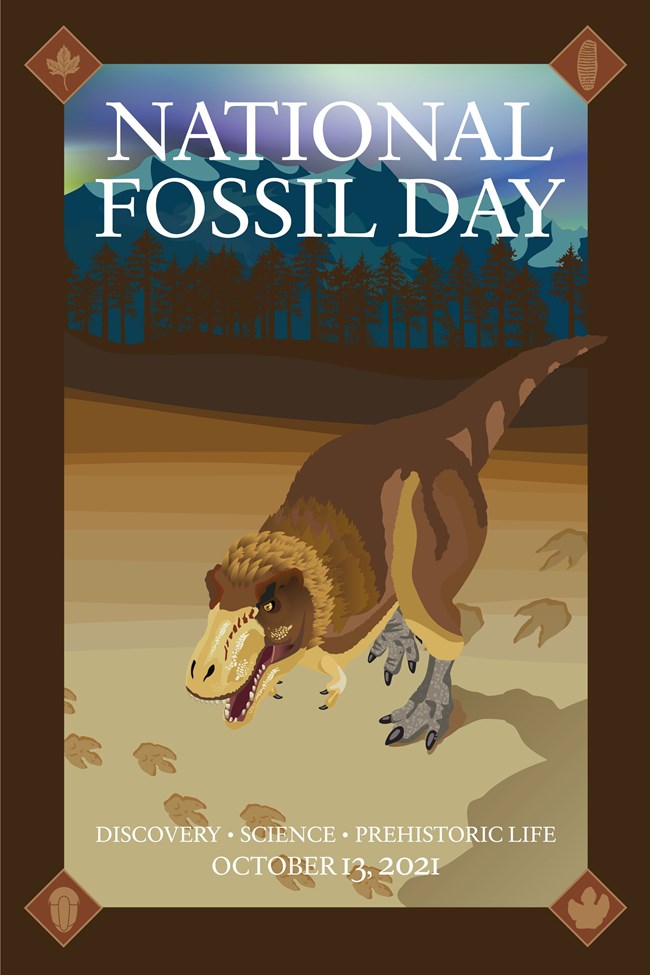
The 2021 National Fossil Day Logo is inspired by the diverse record of Late Cretaceous dinosaur footprints from Denali National Park and Preserve in central Alaska. The logo features an Alaskan tyrannosaur walking under a northern polar night sky, through a mudflat, and encountering a trackway left by a hadrosaur (duck-billed dinosaur). In the distance, an ancient boreal forest outlines the Cretaceous landscape. The Late Cretaceous (100 to 66 million years ago) represents the end of the Mesozoic Era and the height of dinosaur diversity. At the end of the Cretaceous a massive extinction event occurred that claimed all non-avian dinosaurs, pterosaurs, large marine reptiles, several groups of early birds, a few families of fish, and several groups of mollusks such as ammonites. The extinction event also marked the beginning of the Cenozoic Era and the great diversification of mammals.
Located in the interior of Alaska, Denali National Park and Preserve encompasses over six million acres of taiga, tundra, glaciers, and mountains, including the park’s namesake Denali (formerly Mount McKinley). Denali preserves the tallest peak in North America reaching an elevation of 6,190 m (20,310 ft). The area was established as a national park on February 26th, 1917 and was originally named Mount McKinley National Park in honor of President William McKinley. The park was expanded and renamed Denali National Park and Preserve in 1980.
Leaving a Trace of Life
Trace fossils, or ichnofossils, are the evidence of the biological activities and behaviors of past life. These kinds of fossils include footprints, burrows, nests and scat. Trace fossils are distinct from body fossils, which are the physical remains of plants and animals (such as wood, bones or shells). Trace fossils are an important source of information on ancient environments, the distribution of where ancient life occurred and how lifeforms changed over time. They also provide information on soft-bodied animals that are rarely found as body fossils. Trace fossils have been documented in many of our national parks and monuments representing biological activity spanning back more than a billion years of geologic time. At Grand Canyon National Park (Arizona), a rich record of life has been identified from trace fossils dating back to the Precambrian (roughly 1.2 billion years ago) to the Early Permian (275 million years ago). For the Mesozoic, fossil tracks left by early dinosaurs have been identified from parks such as Glen Canyon National Recreation Area (Arizona, Utah) and Gettysburg National Military Park (Pennsylvania). At Death Valley National Park (California) thousands of mammal tracks have been identified from the Pliocene epoch approximately 6 million years ago. At White Sands National Park (New Mexico) playa lake deposits preserve tracks showing a co-occurrence of late Pleistocene megafauna (mammoths, sloths, camels, etc.) and early humans in North America.
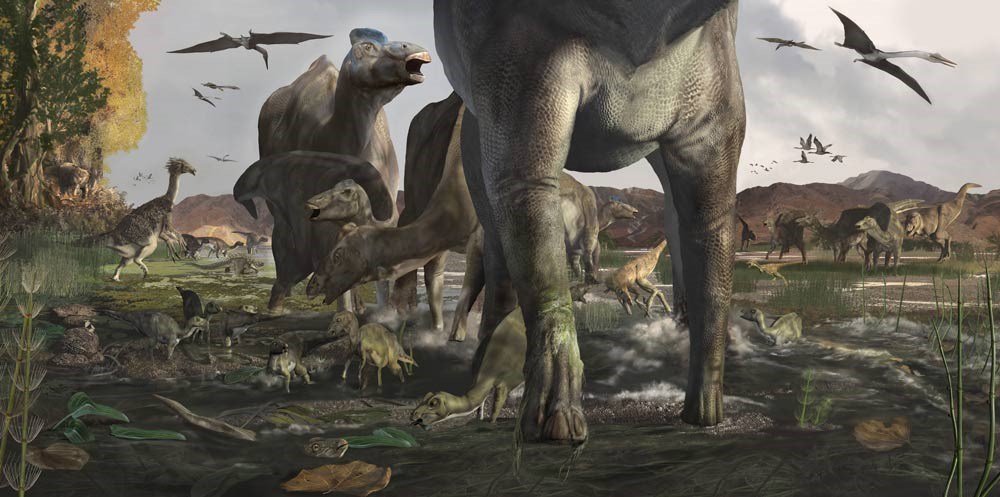
Dinosaurs left their marks in Alaska
The Cantwell Formation at Denali National Park and Preserve consists of sedimentary rocks which are interpreted as braided and sandy stream channels, overbank floodplain and lake deposits. Trace fossils are common in the Cantwell Formation. First discovered in 2005, thousands of fossil tracks representing a variety of dinosaurs and other organisms have been identified within the park. In addition to dinosaurs, traces of small invertebrates such as nematodes (roundworms), oligochaetes (segmented worms), bivalves, crayfish, beetles, and fly larvae indicate a rich diversity of invertebrates occurring in the North American arctic during the Late Cretaceous. Evidence of non-dinosaurian vertebrate traces include the presence of fish and pterosaurs. The pterosaur record includes the distinctive manus (hand) prints of both large and smaller species and is the first fossil evidence of this group of flying reptiles both for the state of Alaska and this far north during the Cretaceous.
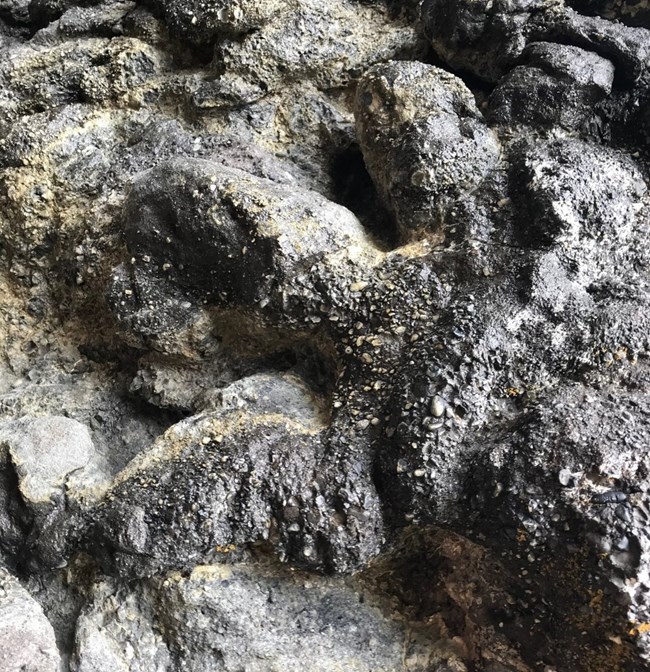
A large number of fossil footprints associated with plant-eating dinosaurs have been identified at Denali National Park and Preserve. The most common are tracks belonging to hadrosaur dinosaurs of different ages. Commonly called “duck-billed” dinosaurs, hadrosaurs were very common and diverse during the Late Cretaceous in North America. At one site within Denali National Park and Preserve, thousands of tracks of hadrosaurs were discovered, representing evidence of a multi-generational (mixed ages) herd. Body fossils found within similarly aged rocks in the Prince Creek Formation of northern Alaska suggests these tracks could have been made by a hadrosaur similar to Edmontosaurus, a common crestless hadrosaur also found in Montana, Wyoming, North and South Dakota, and western Canada. Other tracks of plant-eating dinosaurs at Denali National Park and Preserve include tracks left by ceratopsian (horned) dinosaurs, which are known from body fossils documented in the Prince Creek Formation. Possible tracks of ankylosaurs, armored herbivore dinosaurs, have also been reported from the park.
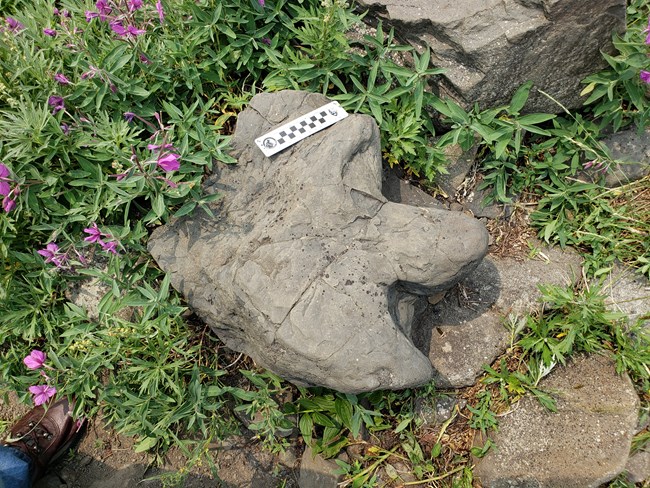
A variety of theropod dinosaur tracks have also been identified from Denali National Park and Preserve. Theropods are a group of largely predatory bipedal dinosaurs. Bird tracks have been found alongside other dinosaur tracks at Denali National Park and Preserve. Several different types of bird tracks have been identified within the park. Theropod and bird tracks typically are three-toed with narrow claws. However, a series of didactyl or two-toed tracks were discovered within the park. These have been attributed to “raptorial” dinosaurs such as dromaeosaurs (the Velociraptor group) or a sister group to the dromaeosaurs called the troodontids. A bizarre theropod track type with four toes has also been identified within the park. These series of tracks have been attributed to either a therizinosaur or an oviraptorosaur. Therizinosaurs were sloth-like plant-eating dinosaurs that had small heads with both a beak and leaf-shaped teeth, and elongated arms with three-fingered large claws. Oviraptorosaurs were omnivorous bird-like theropods with beaks and sometimes prominent crests. Either identification marks the first evidence of either group in Alaska as well as their northern most occurrence. Lastly, large three-toed prints attributed to large theropod dinosaurs have been identified, suggesting a type of tyrannosaur wandered in what is now the park during the Late Cretaceous.
Arctic Tyrannosaur
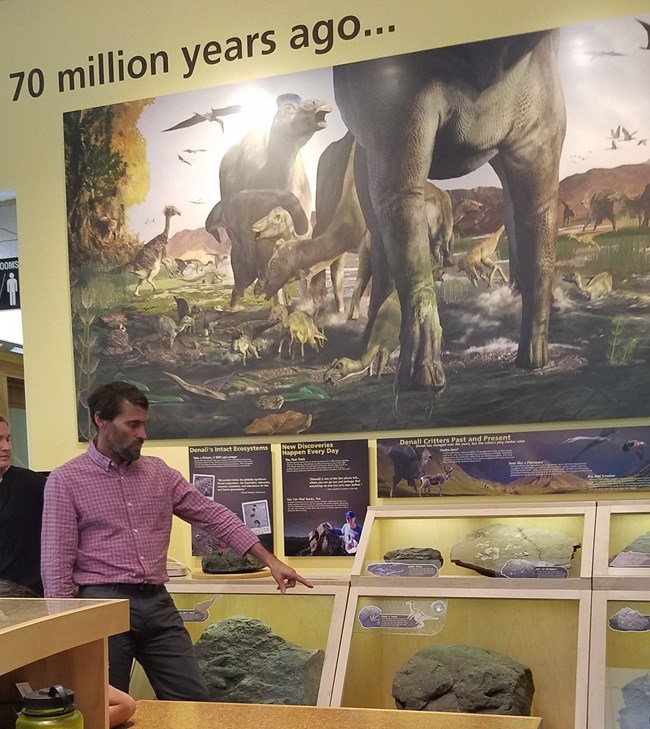
During the Late Cretaceous a relatively small tyrannosaur roamed the Alaskan Arctic. It has been named Nanuqsaurus hoglundi, which translates to “Hoglund’s polar bear lizard.” The name derives from the Iñupiaq people’s word for polar bear, Nanuq and the species honoring philanthropist Forrest Hoglund. This tyrannosaur was a close cousin to the larger and famous Tyrannosaurus rex which is known from the latest Cretaceous of western North America, but was half its size, being estimated at 16 to 20 feet in length. Nanuqsaurus is known from a partial skull collected from the Prince Creek Formation from BLM-administered lands on the North Slope of Alaska. The largest theropod tracks found at Denali National Park and Preserve are attributed to a tyrannosaur with one foot-print measuring half-meter long and representing the largest carnivore ever known to have inhabited Alaska. Our 2021 National Fossil Day logo reconstruction of the tyrannosaur track-maker from Denali National Park and Preserve is based on that of the body fossils found of Nanuqsaurus, and feathered based on fossils of complete earlier tyrannosaurs from the Early Cretaceous of China, Yutyrannus and Dilong. Both Dilong and Yutyrannus were preserved in fine-grained sediments that preserved the impressions of fine filamentous feathers covering their bodies. It is hypothesized that Nanuqsaurus would also have had feathers to help regulate its body temperatures in the cooler climates of the Late Cretaceous Arctic.
Learn more about National Fossil Day and the NFD Logos and Artwork on the official National Fossil Day website
Related Links

Prehistoric Life Coloring Book
Nanuqsaurus hoglundi is a large meat-eating dinosaur that lived during the Cretaceous. Fossil footprints of Nanuqsaurus (or a close cousin) have been found at Denali National Park and Preserve, Alaska. An illustration produced by artist Benji Paysnoe is featured in the National Park Service Prehistoric Coloring Book.
- Denali National Park, Alaska—[Geodiversity Atlas] [Park Home]
- NPS—Fossils and Paleontology
Last updated: August 26, 2021
